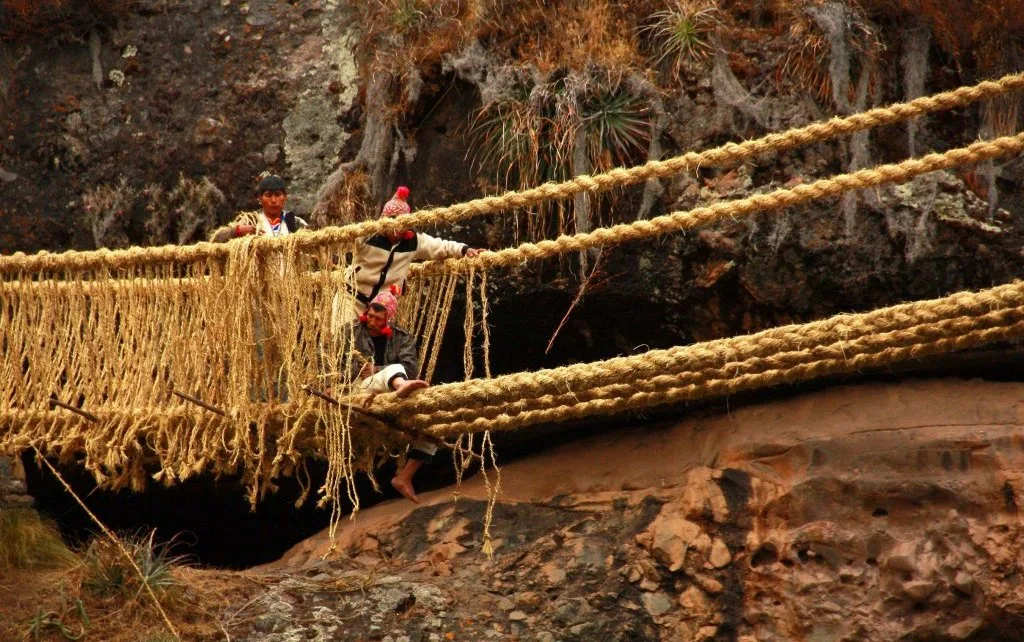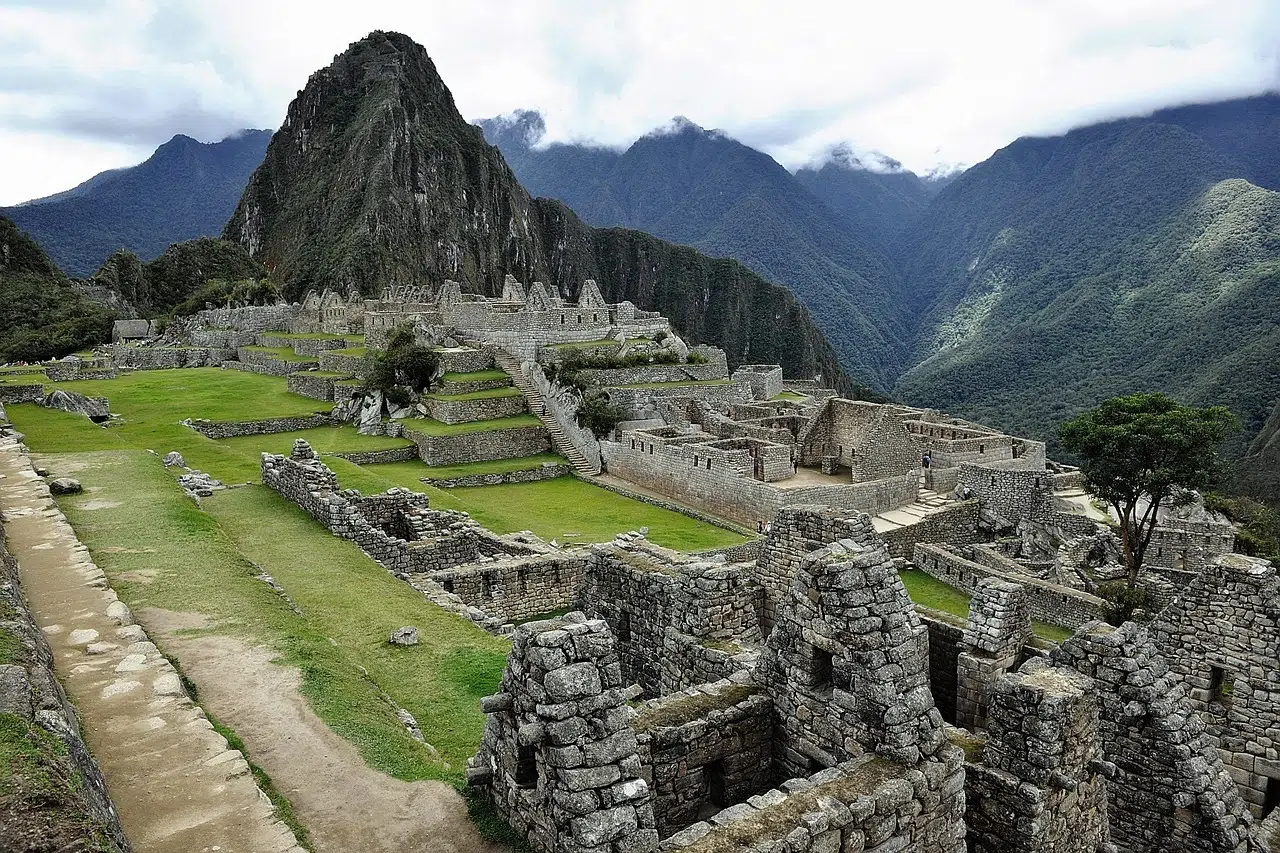Q’eswachaka Inca Bridge: A Living Tradition
Nestled deep in the Cusco region of Peru, the Qeswachaka Inca bridge is a living testament to ancient engineering and Inca culture. Suspended high above the Apurímac River, this handwoven rope bridge has been reconstructed annually for over 500 years, using the same techniques employed by the Incas. Visiting Q’eswachaka is more than just a sightseeing experience; it’s a journey back in time to witness how communities have preserved their ancestral heritage.
In this article, we’ll explore everything you need to know for your trip to Q’eswachaka, including how to get there, the best time to visit, and insights into the remarkable history of this UNESCO-recognized cultural heritage.
Table of Contents
How to Get to Q’eswachaka
Getting to Q’eswachaka is an adventure in itself. Located about 100 kilometers (62 miles) from Cusco, this unique destination can be accessed through a scenic drive across the breathtaking Andean landscape. The journey typically takes around 3-4 hours by car, passing small villages and stunning views of the mountains. Here are the most common options:
- Self-Drive: Rent a car in Cusco and take the route through Combapata, passing by beautiful Andean scenery.
- Guided Tour: Many tour operators offer day trips from Cusco to Q’eswachaka, providing transport, meals, and a deeper understanding of the site. These tours often include stops at nearby attractions, making it a convenient way to explore more of the region.
- Public Transport: For the more adventurous, buses and shared taxis (combis) are available from Cusco to Combapata, where you’ll need to arrange additional transport to the bridge.
Q’eswachaka Day Trip from Cusco
A day trip to Q’eswachaka from Cusco is a rewarding way to explore this historical marvel. Most tours start early in the morning to ensure you have enough time to enjoy the bridge and its surroundings. Along the way, you’ll also encounter other hidden gems of the region, such as picturesque lakes and local villages.
What to Expect on Your Q’eswachaka Day Trip:
- Duration: The full day trip usually takes about 10-12 hours, with a few stops along the way for photos and lunch.
- Activities: Walking across the bridge, learning about the history from local guides, and, if you’re lucky, witnessing traditional weaving demonstrations.
- What to Pack: Make sure to bring comfortable walking shoes, sunscreen, a hat, and plenty of water. The altitude can make the sun intense, even if it feels cool.
The Q’eswachaka Bridge Experience
Crossing the Q’eswachaka bridge is both thrilling and humbling. Made entirely from grass (ichu) using a weaving technique passed down for generations, the bridge stretches around 28 meters (92 feet) across and hangs 15 meters (50 feet) above the river. While the idea of stepping onto a swaying rope bridge might seem daunting, it’s incredibly sturdy due to its meticulous construction.
If you’re looking for an authentic, immersive experience, visiting during the annual Q’eswachaka Festival in June is a must. This is when the local communities come together to rebuild the bridge in a 3-day process that showcases their incredible craftsmanship. The bridge is ritually dismantled and woven again by hand, all accompanied by traditional ceremonies and celebrations.
History of the Q’eswachaka Bridge
The origins of the Q’eswachaka bridge date back to the Inca Empire, when a vast network of roads, known as the Qhapaq Ñan, stretched across the Andean region. Rope bridges like Q’eswachaka were vital for connecting remote areas of the empire, enabling trade, communication, and military movements. These bridges were often located in steep canyons where building stone bridges wasn’t possible.
Despite the passage of time, the people of the region have maintained the bridge through centuries of upheaval and change. The annual reconstruction of Q’eswachaka symbolizes not only the preservation of ancient techniques but also the community’s commitment to honoring their Inca heritage.
Best Time to Visit Q’eswachaka
While Q’eswachaka is accessible year-round, the best time to visit is during the dry season, from May to September. This period offers clearer skies and more pleasant weather, ideal for walking across the bridge and enjoying the surrounding scenery.
If you want a truly special experience, plan your visit around the Q’eswachaka Festival, held in early June. This is when locals come together to rebuild the bridge, and visitors can witness the ancient techniques in action.
Q’eswachaka and Nearby Attractions
If you have the time, consider extending your trip to explore some of the nearby attractions around Q’eswachaka:
- Four Lagoons Route: This scenic route takes you past four beautiful lakes (Pomacanchi, Acopia, Asnaqocha, and Pampamarca) as you make your way to the bridge. It’s a photographer’s dream, with stunning reflections and wildlife.
- Raqchi: Visit the Inca temple of Wiracocha in the village of Raqchi, an important archaeological site with fascinating stone and adobe structures.
- Chonta Canyon: For those interested in wildlife, a detour to Chonta Canyon offers the chance to spot Andean condors soaring through the skies.
Q’eswachaka Guided Tour: What to Expect
A guided tour to Q’eswachaka not only simplifies the logistics of getting to this remote site but also enhances the experience with detailed knowledge about the history and culture. Most tours include transport, meals, and entrance fees, and are led by knowledgeable guides who can share insights into the significance of the bridge and its annual restoration process.
Tour Highlights:
- Walking across the last remaining Inca rope bridge.
- Learning about traditional weaving techniques from local artisans.
- Exploring nearby archaeological sites and scenic spots.
Q’eswachaka Bridge Restoration and Maintenance
The preservation of Q’eswachaka is a community effort, led by local families who take responsibility for different sections of the bridge. Every June, these families come together to weave new ropes from ichu grass, using techniques passed down through generations. This annual reconstruction is not only a practical necessity but also a cultural event, reinforcing community ties and celebrating their Inca heritage.
The bridge is inspected regularly and maintained throughout the year to ensure its safety for visitors, making it one of the most authentic and well-preserved examples of Inca engineering still in use today.
Q’eswachaka Travel Tips
- Altitude Awareness: At an altitude of about 3,700 meters (12,139 feet), the air is thinner, and altitude sickness can be a concern. Make sure to acclimatize in Cusco before your trip and stay hydrated.
- Weather: The weather can be unpredictable in the Andes, so dressing in layers is advisable. The mornings and evenings can be chilly, while midday sun can be intense.
- Photography: The Q’eswachaka bridge and its surroundings are incredibly photogenic. Make sure to capture the contrast between the golden grass of the bridge and the deep blue of the Apurímac River below.
Conclusion
The Q’eswachaka Inca bridge is more than just a tourist attraction—it’s a living piece of history, a celebration of culture, and a testament to the enduring strength of community and tradition. Whether you’re crossing the bridge yourself or witnessing its annual restoration, a visit to Q’eswachaka offers an unforgettable glimpse into the rich heritage of the Andes. So, are you ready to walk in the footsteps of the Incas? Let Q’eswachaka take you on a journey through time, one step at a time.



